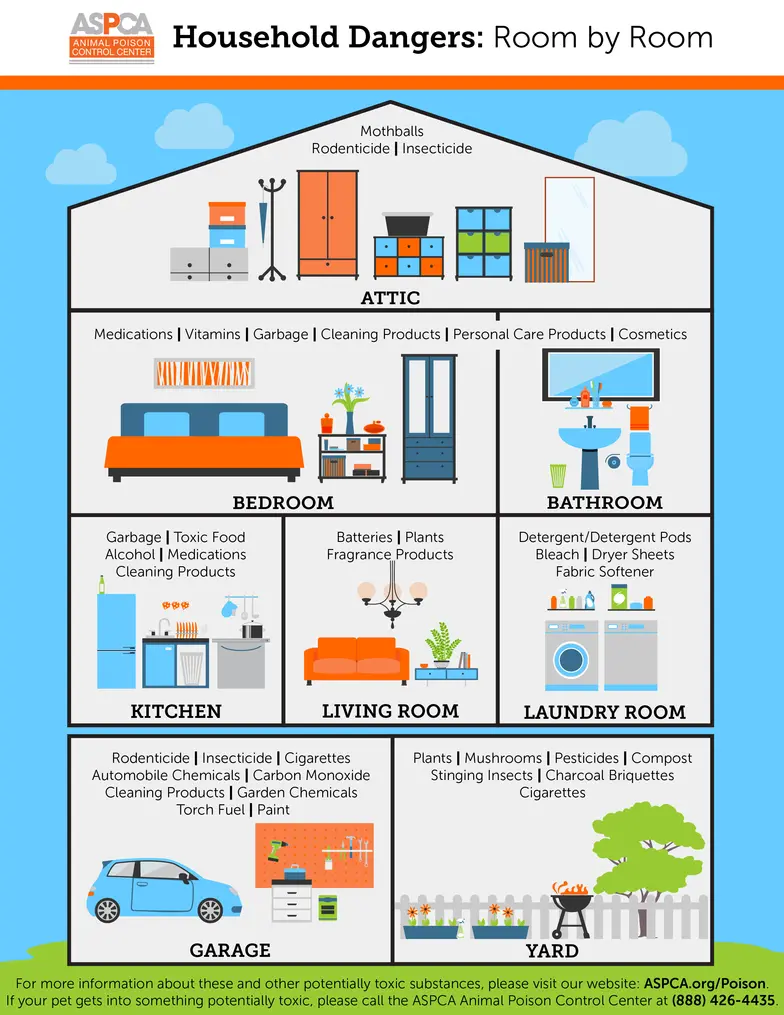Top 10 Animal Toxins of 2018
Each year the ASPCA Animal Poison Control Center examines its data and releases the Top 10 categories of toxins pets come in contact with each year. The data was gleaned from about 213,773 cases of potential animal poisonings examined by the APCC in 2018.
Download the shareable infographic
Here are the top 10 toxins, beginning with the category which caused the most calls to APCC toxicologists.
1) OTC Medications: 19.6%
Over-the-counter medications were the most common group of toxicants pets ingested this year, with 41,865 cases reaching the APCC. This is a diverse group of medications including items such as vitamins, OTC pain medications (acetaminophen, ibuprofen and naproxen), herbal supplements, antihistamines and cold and flu medications. Ingestion of OTC medications are typically accidental so it’s important to share the dangers of these common household items with your clients or new adopters.
2) Human Prescriptions: 17.5%
Medications prescribed for people dropped to number two this year with 36,916 of total cases. ADHD medications, antidepressants and heart medications make up a significant amount of these cases. Pet owners should be reminded often to keep all medications out of reach of pets.
3) Food: 11.4%
Food is number 3 at 24,469 cases. Xylitol, grapes and raisins, and onions and garlic make up most of these cases.
4) Chocolate: 10.1%
Chocolate moved up another spot from last year with 21,635 of APCC cases—working out to almost 60 cases a day! The popularity of chocolate gifts for occasions like Christmas, Valentine’s Day and Easter adds to the danger. Do you need a chocolate calculator? Check out our app!
5) Veterinary Products: 9.3%
Flavored medications and misread labels are a big reason pets run into trouble with veterinary products. Make sure you review with clients how they should give medication—and all pet owners should be reminded that child-proof does not mean pet-proof when it comes to containers.

Download the shareable infographic
6) Household Items: 7.3%
Household items—which includes items such as paint, glue, and cleaning products—remained at the same position year over year. While not necessarily a tasty group, the proximity of pets and supplies is a common reason for exposure.
7) Rodenticides: 6.3%
Rodenticide exposure increased last year to 13,391 of APCC’s caseload. Unfortunately pets, along with rodents, find baits very tasty. While anticoagulants and bromethalin baits are still available, cholecalciferol baits made a comeback this year.
8) Insecticides: 6.2%
Insecticide exposure cases decreased for the second year in a row to 13,260 Insecticides includes items such as ant baits, bug sprays and yard products. Ant baits use attractants like peanut butter which unfortunately attract pets as well as ants.
9) Plants: 5.5%
Plants remained in ninth place with 11,857 of total cases. Indoor and outdoor plants as well as prepared bouquets can present major problems. The APCC app has lots of helpful information regarding plant exposures as well as other toxins.
10) Garden Products: 2.3%
Garden products also stayed in the same spot this year as last. Fertilizer, bone meal and compost are all garden products many dogs find irresistible. APCC also gets a fair number of calls about herbicides. While not as tasty, herbicides are often used in areas frequented by pets.
Get ASPCApro delivered direct to you.
The latest news from experts and thought leaders right to your inbox.
